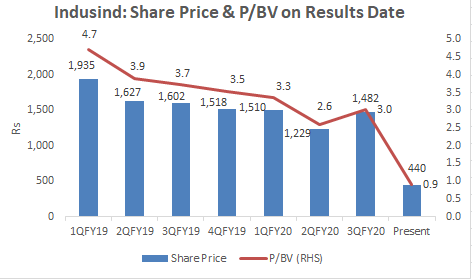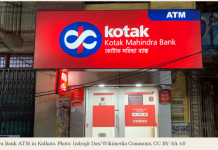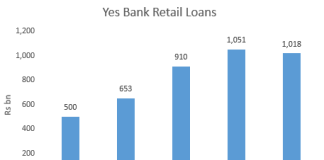EXECUTIVE SUMMARY. The savage mauling of Indusind Bank’s share price in the last year, and especially in the last month, is a reflection of the unravelling of the bank’s high-risk asset and fee growth strategy. A bank which use to trade at 5x P/BV is currently reduced to being valued at below BV. This speaks of a complete loss of confidence among equity investors. Such an event should have led to a deeper introspection by the bank’s board of directors on the capability and competence of Romesh Sobti, chief executive officer (CEO), who will finally retire on March 23, 2020 after a stint of 12 years at the helm. With such a disastrous track record of share price under-performance stretching back 5 years, with depositors pulling out deposits from the bank, the board should have selected an individual from outside the bank and terminate all links with Sobti, once the latter completes his term.

Instead, the board of directors of Indusind Bank selected as Sobti’s heir Sumant Kathpalia, a Sobti acolyte who had joined the bank along with his mentor from ABN Amro in 2008. But even further, the board is likely to appoint Sobti as a “full-time advisor” to guide the bank in this tumultuous phase of Sobti’s own making. A CEO who was responsible for fudging two consecutive years (FY2016 and FY2017) of financial accounts (a travesty which is a criminal offence if proved to be “wilful”), betting nearly 10% of the bank’s capital in an unsecured loan to an insolvent IL&FS, and making the bank take high risk exposure to stressed business groups in real estate, media and telecom should have been removed by the board, rather than rewarded by allowing him to influence business decisions as an “advisor”. This is the pathetic state of corporate governance practised by private sector bank boards in India, and institutional investors and the banking regulator remain silent spectators to this charade.













